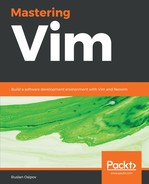Git represents history of changes to files using commits—atomic sets of changes to files. In addition to a diff of changes, each commit has a (hopefully) descriptive message attached to it (by the author of the commit), allowing you to determine what changes were made at any given point in time.
Commit history is not just linear and can branch, allowing Git users to work on multiple features without stepping on each other's toes. For example, in the following example (read from bottom to top), feature A was built in a master (main) branch, while feature B was developed in parallel in its own branch, called feature-b:
* Merged feature B into a master branch
|
* | Improved feature A
| * Finished making feature B
| * Started building feature B (feature-b branch)
|/
* Implemented feature A
* Initial commit (master branch)
Git is a distributed version control system, meaning that there is no central place to talk to: every developer owns a full copy of the repository.
